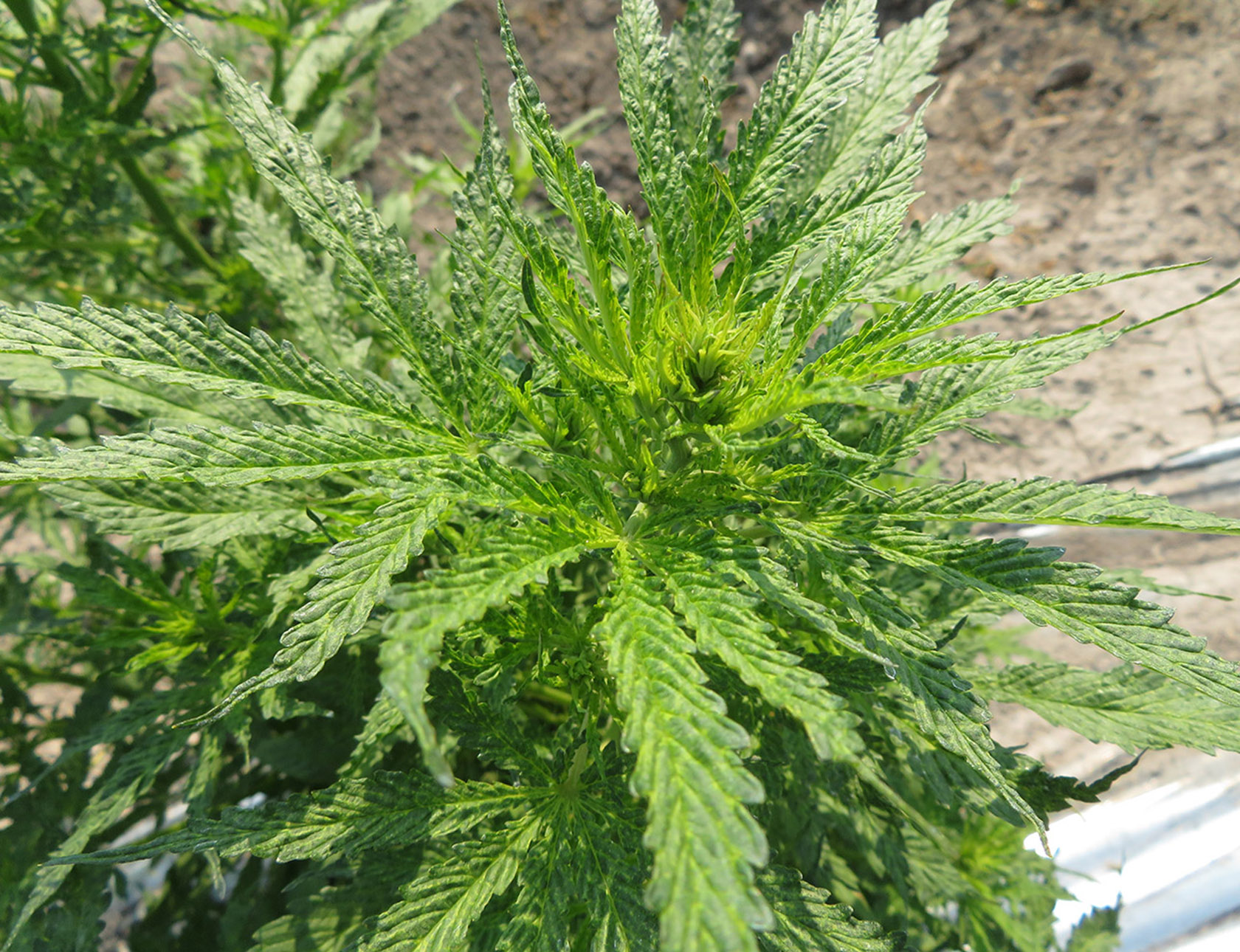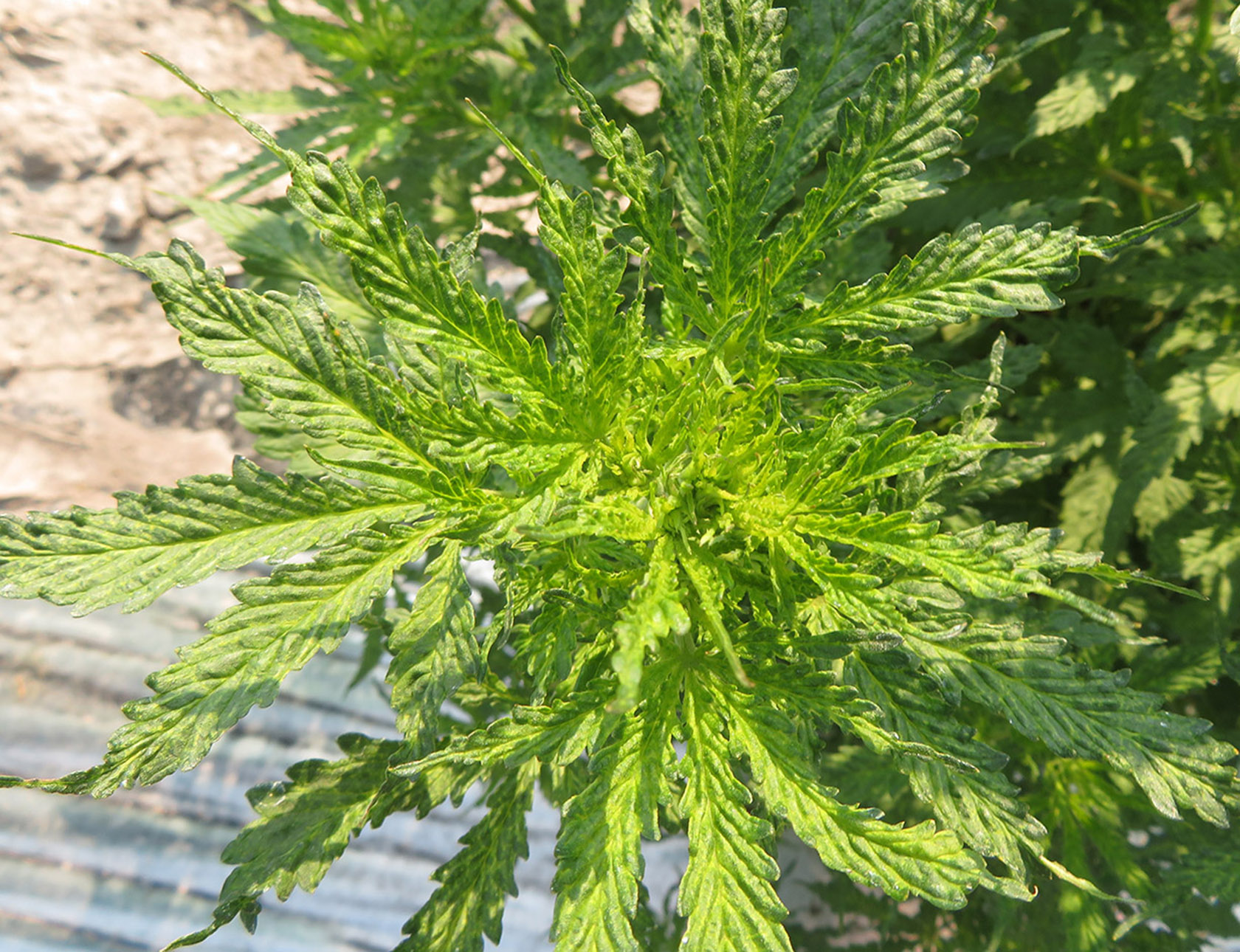Alfalfa Mosaic Virus
Genus Alfamovirus in the family Bromoviridae
 Suspected alfalfa mosaic virus symptoms in field-grown hemp.
Suspected alfalfa mosaic virus symptoms in field-grown hemp.

Suspected alfalfa mosaic virus symptoms in field-grown hemp.
Hosts
- Field-grown hemp
- Legumes
- Solanaceae family
- Ornamentals
- Weeds
Symptoms
Foliage develops bright yellow blotches interspersed with green, called “mottling.” Leaves can curl and also develop a bronze discoloration. On alfalfa and some other crops, the phloem tissue is killed, resulting in plant death. This symptom has not been documented on hemp. In addition, the effects of this virus on cannabis yield and flower quality have not been determined.
Disease Cycle
Alfalfa mosaic virus is harbored in many virus-infected alfalfa fields and weeds. AMV is spread by several species of aphids, and it is unknown if Cannabis aphid is a vector. Aphids acquire the virus from an infected plant and transmit it to hemp by probing
leaf tissues. Aphids with the virus are only able to transmit it for a few minutes to a few hours. Infections usually occur in hemp fields grown near alfalfa, and only on plants closest to the alfalfa.
Time for Concern
Throughout the growing season
When and Where to Scout
Starting in late spring, observe plants for unusual leaf coloration, especially on plants growing closest to alfalfa fields.Threat Level
Low.
Occurrence in Utah
Alfalfa mosaic virus has not yet been detected in Utah, but is likely to occur. It has been reported on Cannabis in British Columbia, Canada.
Management
- Avoid planting hemp close to alfalfa, if possible.
- Remove plants with positive diagnosis.
When to Consider Treatment
At this time there is no information available that treatment is needed.
Look-alikes
Other viruses, genetic abnormalities, nutrient deficiencies (nitrogen, iron, magnesium), herbicide damage, stunted growth due to poor growing conditions.
Photo Credits
All photos: USU Extension IPM Program

